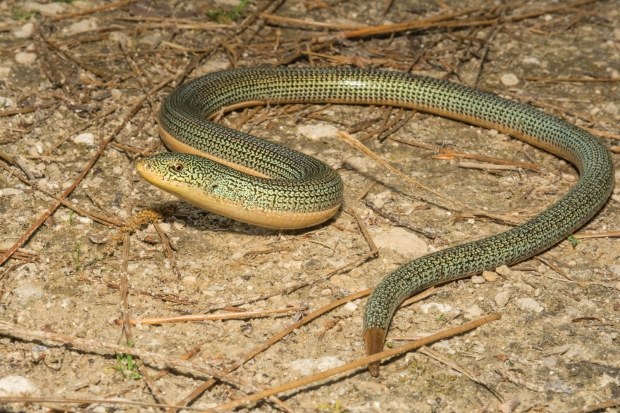
The longest lizard in South Carolina, this fellow measures 18 to 42 inches in length, and is legless. They have smooth scales, are tan to greenish in color and sport small black spots along the body. Additionally, there are often numerous vertical white bars just behind the head. Its underside is pale yellow.
These lizards are found in a variety of habitats, from Southern Virginia to the Mississippi River. They prefer open, damp areas, and hide beneath leaf litter and other debris on the forest floor. Glass lizards are most active during spring and summer. They forage underground, or under cover for invertebrates, amphibians, and other reptiles.
Because of its slender, aerodynamic, limbless, and lengthy body, the glass lizard is often confused with a snake, likely to its detriment. The lizards, however, possess a moveable eyelid, an external ear opening, and are harmless to humans, as they possess no venomous glands. Unlike the snake, they have nonexpandible jaws.
If grabbed, they will often bite their captor and hastily break off their tail to escape. Interestingly, the tail will continue to wriggle, a defense mechanism that’s meant to distract their predators. Their tails will regrow, but will be shorter and darker than the original.